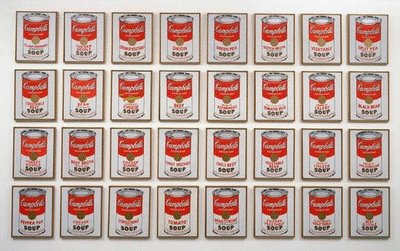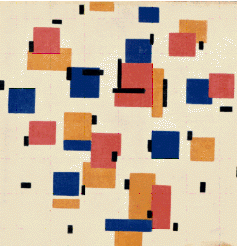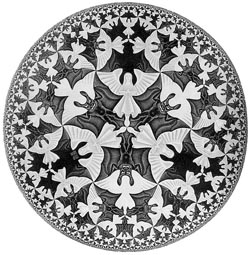Home
Contacts
Lectures
Artists
Design Elements &
Principles
Resources
[Overview] [Dependence] [Design Issues] [Programming] [Math] [Exercises] [Examples]
This lecture introduces the concept of the simple 2D transformations and how they are achieved in Processing. The transformations to be discussed are translation, scaling, rotation, and their combinations. Transformations make it simple to repeat shapes or images in different locations, sizes, and orientation.
Transformations are also useful when the creation of a shape is simpler to specify in an orientation that is different from the orientation within the final picture. For example, it is easier to specify the coordinates of the corners of a square when its sides are aligned with the vertical and horizontal than when the square is oriented at an arbitrary angle. Transformations make it possible to specify to coordinates in the simpler orientation, and then easily apply a rotation.
Design Issues: Repetition through TransformationIt is common to repeat a shape or image within a picture. The repeated object is moved, scaled, or rotated to create pattern, movement, or emphasis.
In the case of Warhol and Mondrian, shapes are, for the most part, translated with little other change:

Andy Warhol, Soup Cans
Andy Warhol, Coke Bottles
Piet Mondrian, Composition in BlueThe first two images below (Notre Dame and Escher Circle Limit) illustrate the use of rotation and scaling. Escher's Symmetry uses rotation and translation. William Morris shows the use of reflection, which as we will see, is a type of scaling.

Window at Notre Dame
M. C. Escher, Circle Limit,
Heaven and Hell
M. C. Escher, Symmetry
William Morris, PimpernelIn the works below, the repetition is less exact. Yet, we see in all of the the clear repetition (with transformations) of many different shapes.

Fernand Leger, The Big Black Divers
Fernand Leger, Three women
Pablo Picasso, Guernica

